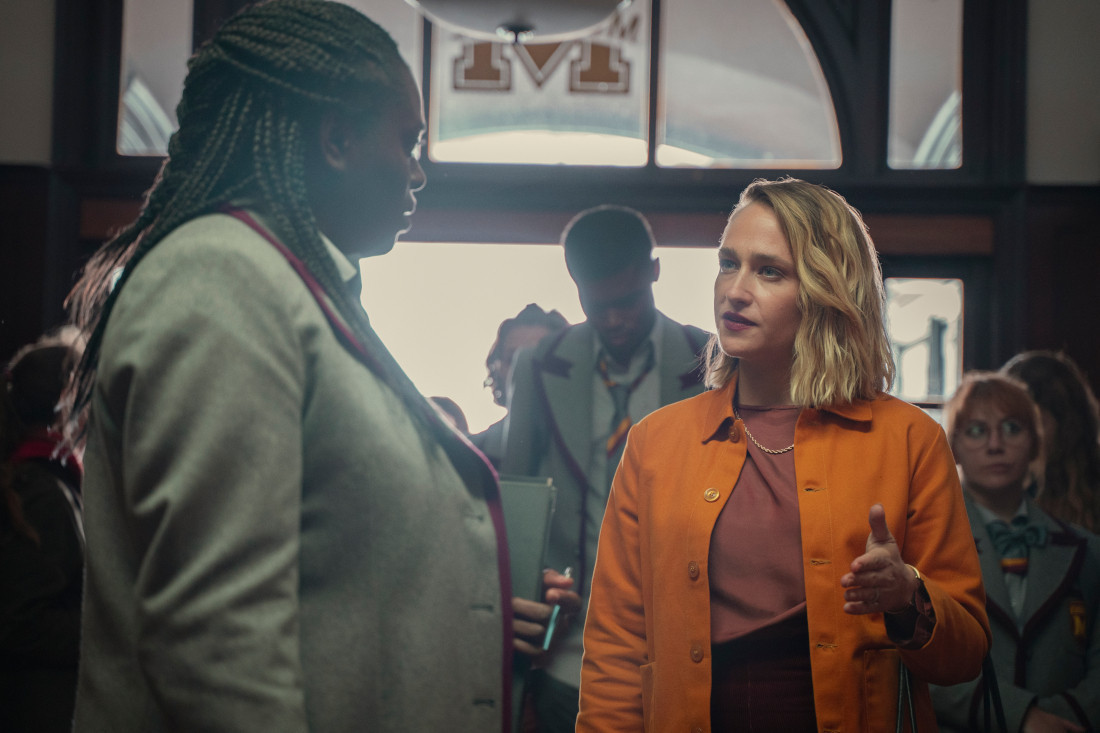Sex Education season 3
★★★★☆
The third and latest season of Sex Education finally reckons with gender identity – a risky choice, given that the show revolves loosely around the premise of an illicit high-school sex clinic. Fortunately, the non-binary characters are not introduced as clients of the clinic but as a separate subplot laced with social justice and non-conformity. Cliché? Yes. But a good place to start.
For those unfamiliar with the show, the clinic is run by Otis Milburn (Asa Butterfield) and his friend Maeve Wiley (Emma Mackey). Season 2 ends with a clinic-related scandal at Moordale Secondary School and the firing of their headteacher.
After two seasons featuring cisgender – although often queer – protagonists, the introduction of two enby (non-binary) characters comes as a breath of fresh air.
Cal (Dua Saleh), who features centrally in the plot, is assigned female at birth and conforms to other non-binary stereotypes: they bind their chest and have an overall androgynous style, use they/them pronouns and fight back against gender roles and gendered spaces.
Layla (Robyn Holdaway) is Cal’s self-effacing counterpart, conforming to the school’s gendered policies to keep Hope (Jemima Kirke), the new headteacher, happy. This is contrasted with the typical tragic montage of Layla struggling to bind their chest with an ACE bandage.
Sex Education does a good job at portraying non-binary identities as normal and easy to understand, making anyone who lacks respect seem out of touch. For instance, in a somewhat ham-fisted attempt to underline Cal and Layla’s struggles, the students are suddenly made to wear gendered uniforms.
However, this creates a weird paradox where it almost seems as though all Cal and Layla have to worry about are Hope’s ridiculous and regressive policies. Viewers barely see the microaggressions of Cal and Layla’s existence with their peers, making Hope out as a clear Other to be defeated and failing to address the systemic issues at play.
Cal denotes the existence of a non-binary stereotype, saying they aren’t a “good enby” because, unlike Layla, they don’t respect the confines of the school rules and are vocal about their disagreements with Hope.
Cal partially misses the mark. In another sense, they are the good enby precisely because they fight back against the system, are visibly androgynous, sure of themselves and unaffected by social norms.
It would be good to see binary trans characters and non-binary characters who are intersex or assigned male at birth, who use neopronouns, who don’t look androgynous, aren’t thin and don’t have the energy to fight back.
Despite this, the show challenged the non-binary stereotype by centring the experience of a Black enby and in choosing to tell the story with an air of annoyance rather than tragedy. Because annoyance is really the emotion at the heart of all this. Gender identity and gender expression are not up for debate, and people are tired of arguing about it.
It is refreshing to see representation of enbies in the media. But it’s also disappointing that Cal and Layla’s stories revolve around their struggles to be seen and respected. Hopefully, Season 4 will bring a more interesting plot thread for these characters, and perhaps a more gender-diverse cast.
Published in Volume 76, Number 09 of The Uniter (November 12, 2021)








